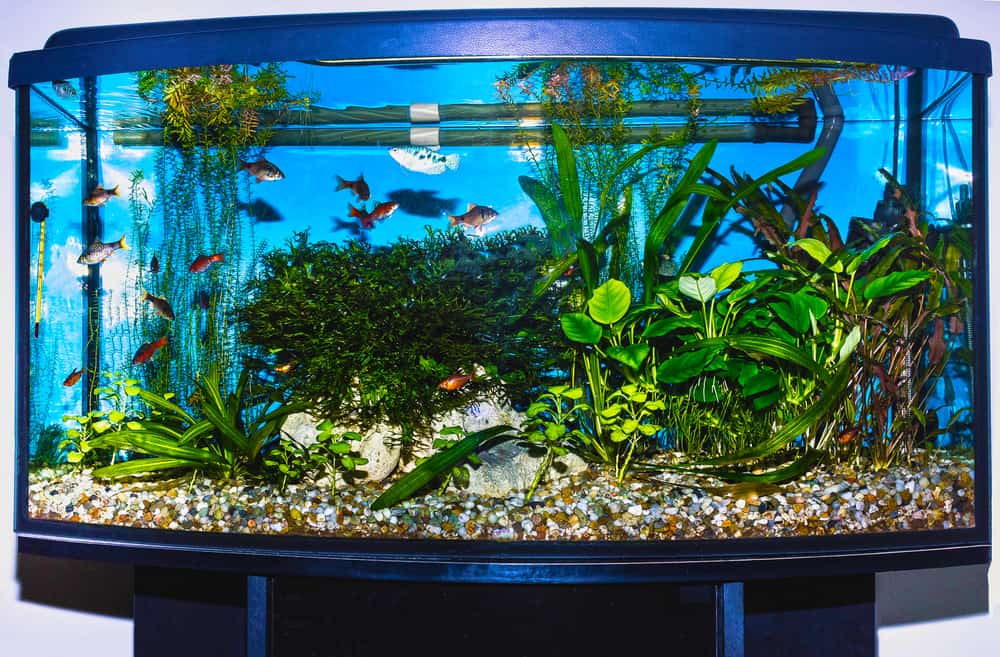
Keeping an aquarium at the right temperature is probably one of your most important jobs as a fish keeper.
Short heat spells usually won’t hurt your fish, but the longer the heat wave gets, the more dangerous it’ll be.
If you live in a region where the weather gets scorching in the summer, you should think of a permanent cooling system.
However, if you’re experiencing an unexpected heatwave, there are methods you can try to lower the water temperature and keep the aquarium cool.
How to Keep the Aquarium Cool
1. Circulate the Air
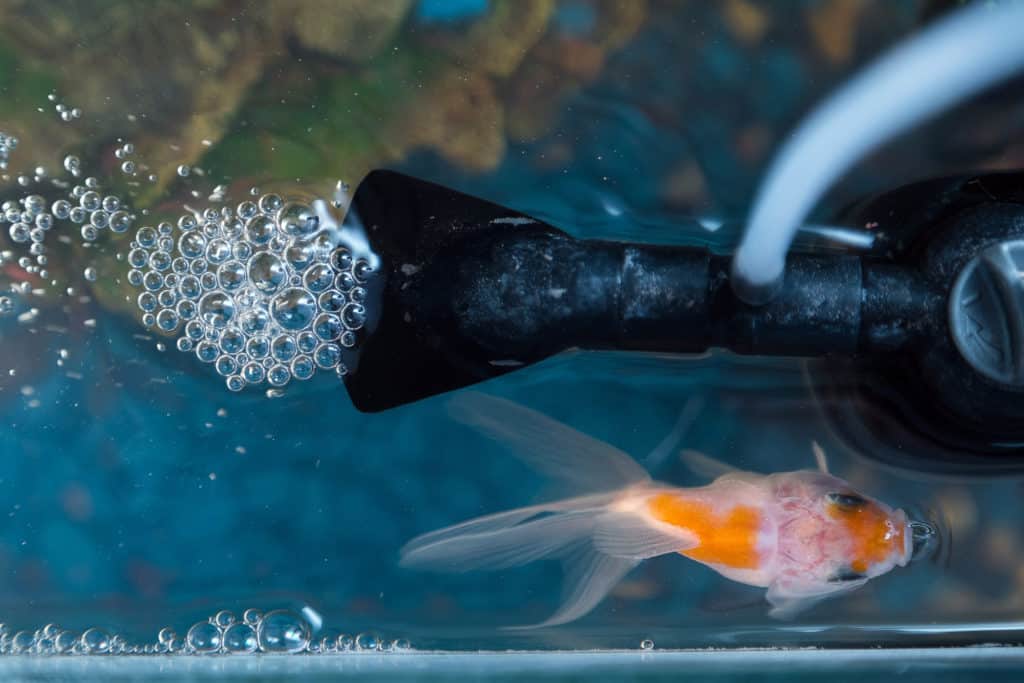
If heat gets trapped inside an aquarium, the water will warm up pretty quickly.
The first thing you need to do when facing a temperature increase is to open the aquarium’s hood or remove it altogether.
This way, the hot air produced by the lights and the working equipment like the filter and pumps can escape.
This alone will decrease the water temperature by a couple of degrees.
Evaporation is another thing which can help cool the water.
It only happens when the water surface is exposed to open air.
Glass or plastic hoods limit the airflow and trap the heat and moisture.
You can do a few things to prevent the fish from jumping out when the hood is removed.
For example, decrease the water level by a couple of inches or install an open grid or a large mesh on top.
2. Aerate the Water
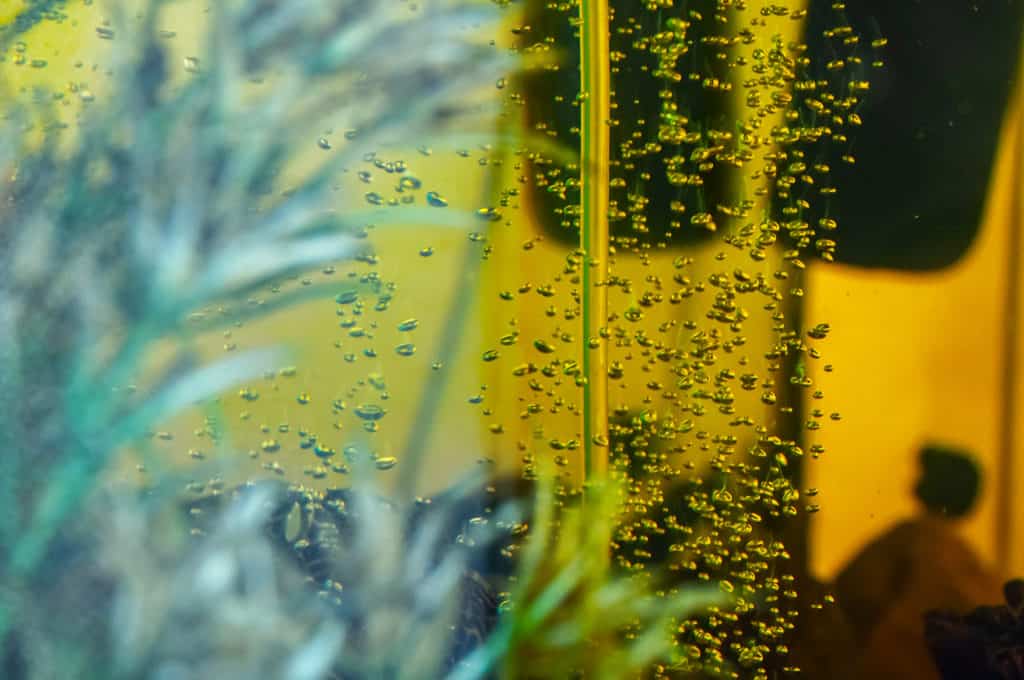
When the water’s temperature increases, the dissolved oxygen level drops, and the fish will burn energy faster.
Therefore, their bodies will need more oxygen.
However, there’s less oxygen in the water than usual, which will leave them stressed and suffocating.
The second thing you should do after opening the lid is fire up an air pump or water pump to increase the water’s surface area.
By agitating the surface, a lot of gas and heat can be exchanged.
The carbon dioxide will leave the water to be replaced with oxygen.
While the bubbles break the water surface, more water can evaporate, too.
You may notice that your fish are coming to the surface to gasp for air, their gills move rapidly, or they’re staying at the bottom of the tank, not moving.
These are all signs of oxygen deprivation.
In case of an emergency, if you don’t have air pumps and air stones, you can install your filter higher up, so the water can pour down and distort the surface.
You can also get a jar or glass, fill it with the aquarium water, lift it, and pour the water back in to cause some movement.
3. Adjust the Tank’s Environment
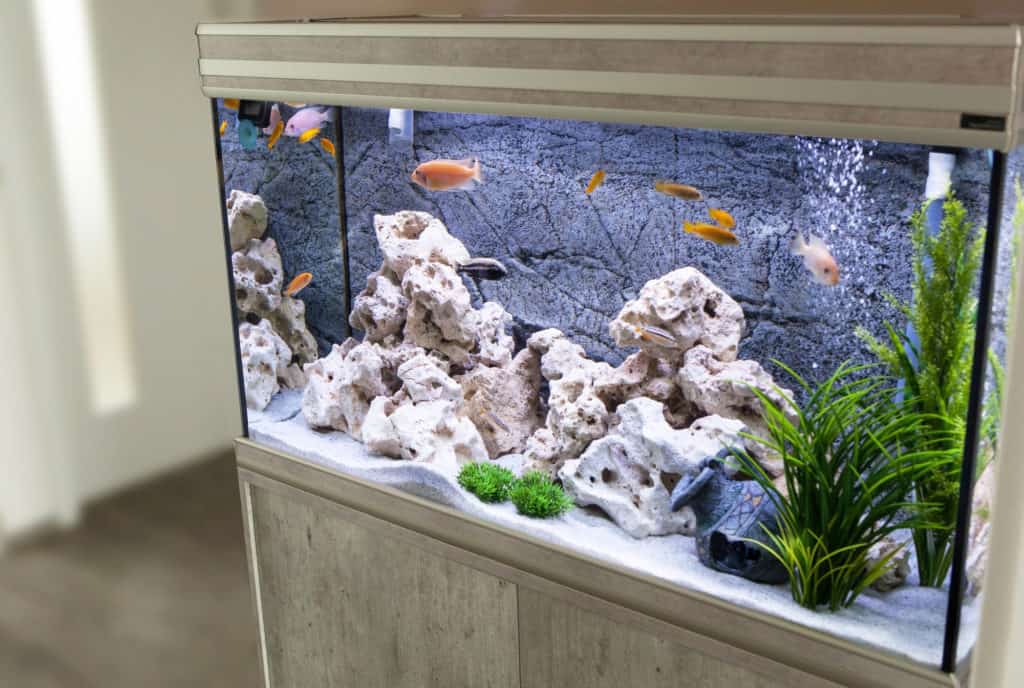
If you keep the exterior environment of your tank cool, the tank itself will cool down.
You should try to maintain the room’s temperature in any way you can.
Installing an air conditioning system is the best way to do this.
During the summer, leave the windows open at night to recycle the room’s air.
Air is a great conductor of heat.
Proper airflow around your aquarium contributes to reducing its temperature.
If walls surround your aquarium, it won’t be able to transfer its heat easily.
Therefore, move it to an open area.
Some rooms in the house are naturally hotter or cooler than other ones.
Don’t put the aquarium in or near the kitchen, where the temperature rises.
You can also relocate the tank to the basement to cool it down.
The floor is usually a couple of degrees cooler.
Even putting the tank down on the floor can help.
Open the aquarium cabinet doors to let out the heat.
The equipment in the cabinet, like filters and pumps, produce heat when they work.
In a sealed cabinet, this heat will be transferred to the aquarium.
4. Adjust the Lighting
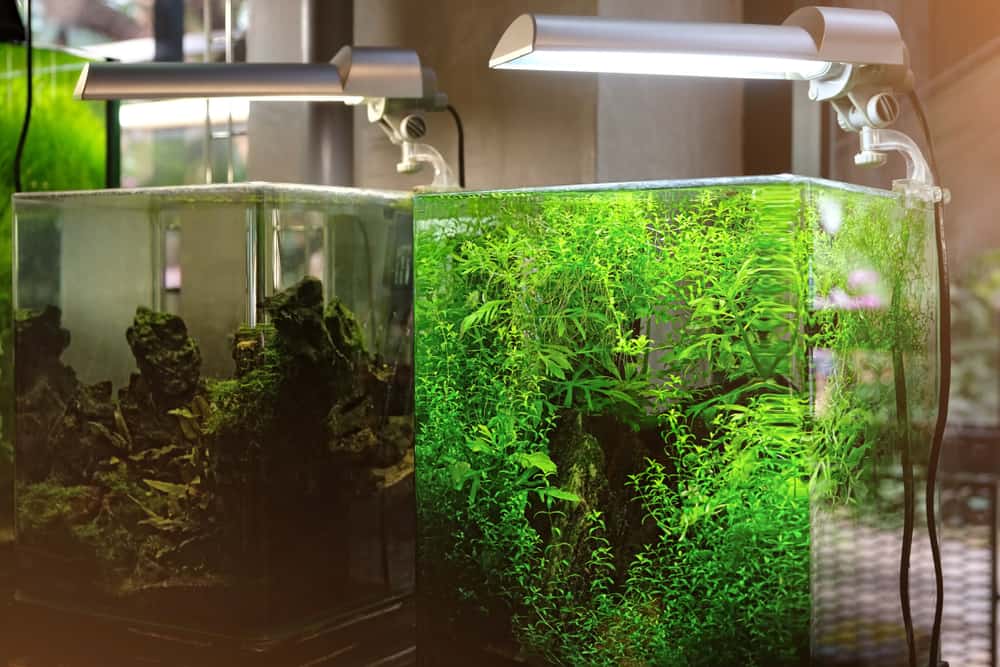
Lights are usually the main heat source in the aquarium.
They transfer heat to the water while lighting it up, and the heat will get trapped if you’ve sealed the tank with lids.
Metal Halide lights and T5 or T8 fluorescent tubes commonly used for aquariums produce a lot of excess heat.
LED light bulbs generate less radiant heat, but it’s still present.
If you have a fish-only tank, you can turn the lights off completely until it cools down.
If you keep plants and corals in the tank, you can dim the lights and reduce the time the tank gets light per day to six or eight hours.
Direct sunlight can be more dangerous for your aquarium.
The water can heat up very quickly if the tank is positioned under direct sunlight, even for a few hours during the day.
This situation can also trigger an algae outbreak.
Either move your tank away from the window or close the blinds.
You can put up some sheets to prevent the aquarium from overheating if you don’t have blinds on your windows.
5. Insulate the Tank
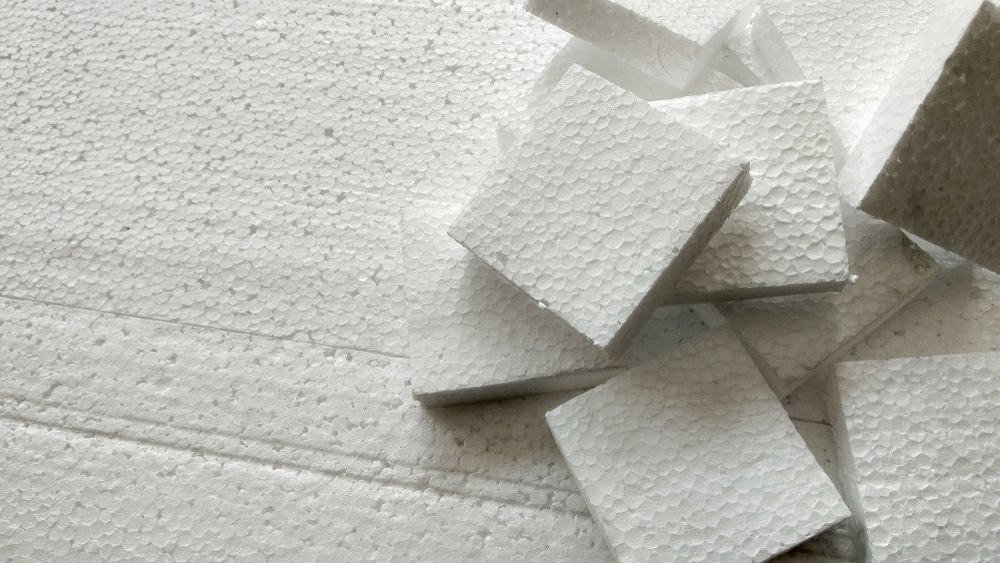
You’ve probably seen how some hobbyists decide to insulate their tanks during the winter to keep the warmth in.
Well, that method can work both ways.
If you’re incorporating any of the methods we’ve described so far, insulating it will help keep the cold in and the warmth out.
You can use polystyrene or Styrofoam, cardboard, or any other insulating material to cover the sides, front, and back of your aquarium.
Leave the top open to let air in.
Remember, insulating your tank will only work if you’re trying to cool the tank down with other methods.
6. Use Ice Packs
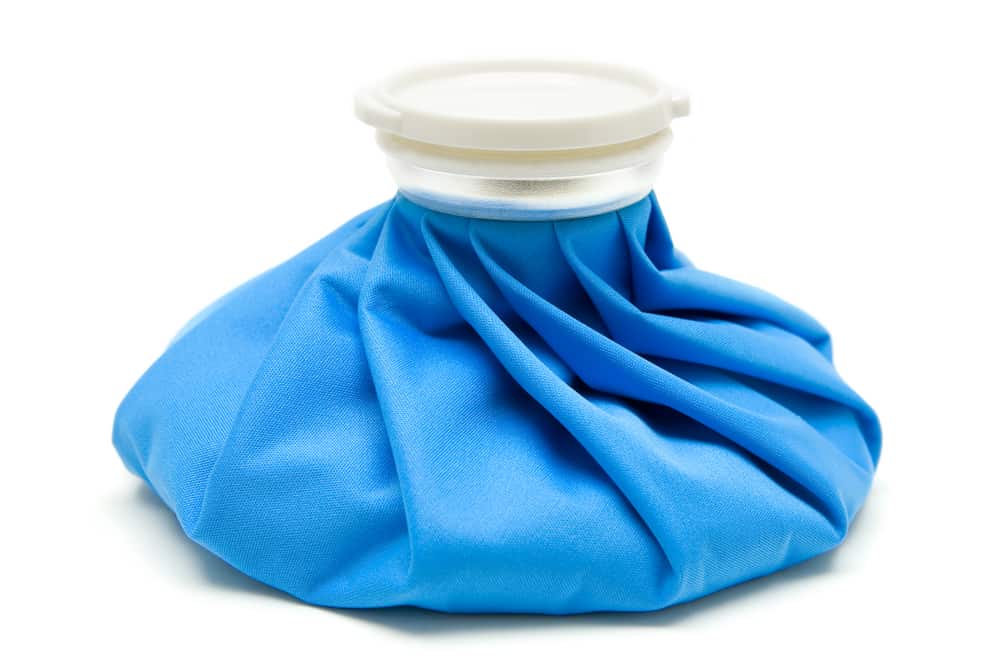
Using ice to reduce the water temperature is an emergency fix, especially for the hottest days of summer.
You need to take a sealed bag of ice and float it in the aquarium.
You can also use a water bottle.
Fill two-thirds of the bottle and put it in the freezer with its cap off.
Make sure the bottle is clean. Put the cap on and float it in the tank.
This method needs your constant attention since it can drop the aquarium temperature too quickly and shock the fish.
The temperature shouldn’t decrease more than two or three degrees every couple of hours.
Monitor the tank and don’t add more bags or bottles before the old ice has already melted.
Make sure the containers are entirely sealed and won’t leak the ice out once it’s melted.
If you’ve used tap water to make the ice, the chlorine can hurt the fish.
You may need to experiment with the number of bags and bottles you’ll need for cooling your tank down, depending on your tank’s size.
You might need to change the container every few hours.
If you notice your fish are swimming too close to the ice, remove it because they may touch it and get stuck.
Don’t use this method if your aquarium water is still and isn’t circulating enough because the water surrounding the ice will immediately get cold.
Without proper circulation to mix the cold and warmer parts, the fish may swim through the cold water and experience a severe shock, leading to illness and even death.
7. Use the External Filter
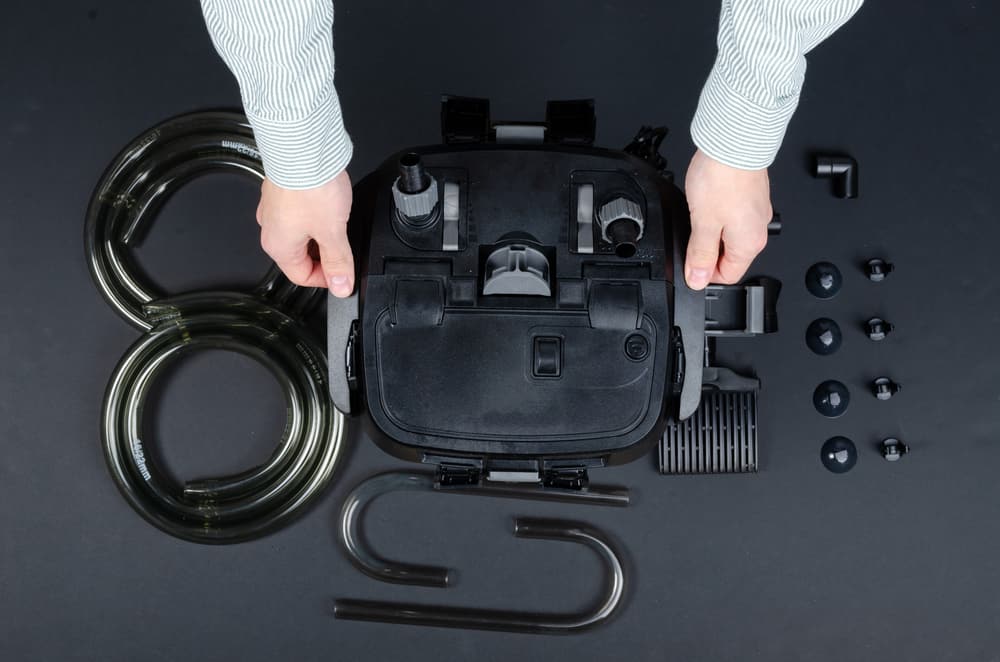
If you have an external filter for your aquarium, you can use it to cool down the water.
Simply put the filter or its pipes in an icebox or a bucket full of cold water or ice.
The water temperature will drop as it runs through the cold pipes.
You should monitor your tank very closely so the water doesn’t get too cold, especially if you have a small aquarium.
Also, the filter’s temperature shouldn’t decrease too much, as it can hurt the beneficial bacteria that live inside the filter.
8. Install a Drip System

Installing a drip system won’t help you when there’s an emergency.
However, if you’ve had multiple failures with controlling the water temperature, this system can help you.
The main reason hobbyists install this system is to enhance the water quality so that they don’t have to do regular water changes.
With a proper system and filter, your water parameters will remain at their best, and the temperature will be constant.
At the same time, fresh and cool water continuously enters the tank while the warm and dirty water gets out.
You can adjust the drip system to increase the flow if the temperature increases.
9. Use a Fan
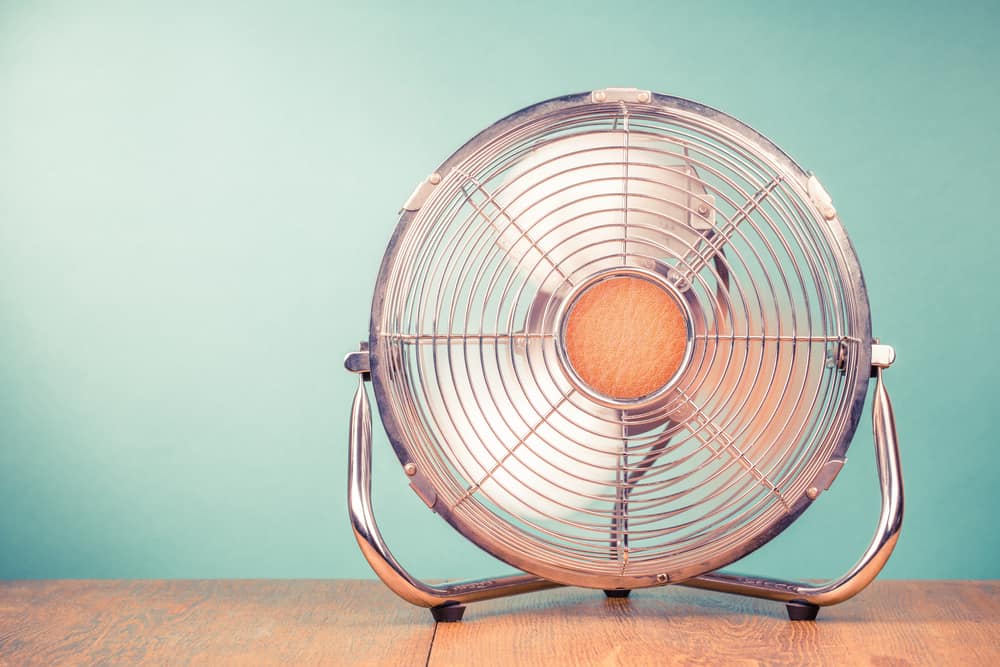
Installing a fan on top of your aquarium after removing the lid can really help on hot days.
The fan will blow cool air on top of the water and drive the warm air away.
It’ll also cool down the aquarium lights and reduce the heat they produce.
Another important feature is that fans highly increase water evaporation.
When water changes from liquid to gas, it loses energy and heat, reducing the temperature by up to four degrees.
You should be careful after installing a fan because the evaporation will cause the water levels to drop quickly.
You may even have to top off the water every day, especially in saltwater tanks, because the dissolved salt levels can increase and cause other problems.
You can use small clip-on fans or fans that are specifically designed for aquariums.
Depending on your tank’s size, you may have to install more than one fan.
Just remember to buy fans that don’t generate too much noise and disturb the fish.
Make sure the fan is installed correctly and won’t fall into the water.
You can even use desk fans in case of an emergency.
Be careful not to splash the water out with the high power.
You can even install an aquarium monitor to control your fan and lights.
It can be programmed first to turn off the lights when the temperature exceeds a certain level.
Some controllers can even send you an email or text, letting you adjust everything using your phone.
10. Use an Aquarium Chiller
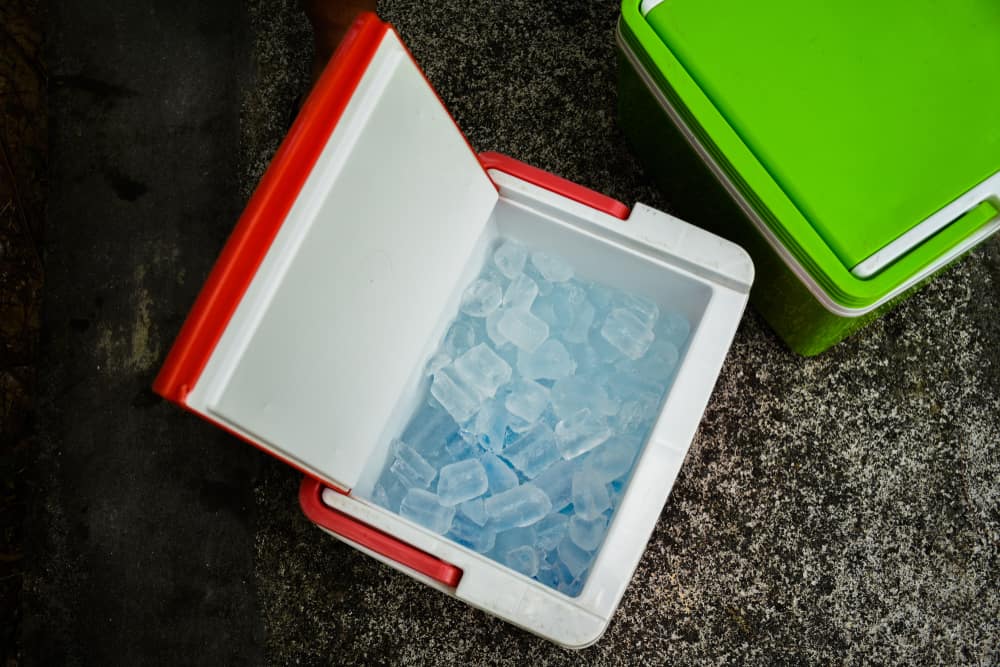
Purchasing a chiller should be your last resort.
If you’ve tried all the other suggested methods and you still can’t get the temperature to where you want, you’ll have to invest in a chiller.
Chillers are big boxes that work like mini-fridges, and they’re costly.
Some hobbyists refuse to buy a chiller because of the high price or the fact that you can’t easily find a proper place for them.
However, in the warmer regions of the world where people face prolonged heat waves, it’s necessary to maintain the environment along with a heater.
Chillers have pipes that pump water from the tank into the system and pump it back up when it’s cool.
Some people choose to put the chiller under the aquarium in the cabinet, but that’ll reduce efficiency.
The chiller produces heat when working, and the heat will get trapped inside the cabinet, finding its way back to the aquarium.
The plumbing can get a bit tricky, but it’s best to put the chiller in a separate room from the aquarium and give them breathing space for the heat exchanger.
Remember to keep the chiller box for at least a month after you get it because chillers can easily get damaged during shipping, and the damage won’t be noticeable at first.
What You Shouldn’t Do to Cool Down Your Tank

1. Don’t Do Cold Water Changes
You shouldn’t change more than 25 percent of the water each time, or else you’ll change the water chemistry and hurt the fish.
To cool the tank with a 25 percent water change, you’ll need the incoming water to be icy.
The cold water will drop the temperature too quickly, causing a shock for fish and leaving them prone to disease.
Plus, if you’re using cold treated tap water that’s rich in oxygen, it’ll rapidly warm in your tank, and tiny oxygen bubbles will start to form.
This way, the water will get into your fish’s system, and tiny bubbles will form in their blood, causing embolisms.
You can do regular water changes with water that’s only about one or two degrees colder than the tank’s, but be careful with any more than that.
2. Don’t Put Ice in the Water
Much like cold water, adding ice cubes directly to the tank will drop the temperature too fast and cause problems.
Besides, the ice will leach chlorine into your aquarium water once melted, unless it’s made with treated RO water.
When the ice melts, it can look like tiny bits of food to fish, and if they eat it, they’ll get seriously hurt.
3. Don’t Turn off the Heater
So many people make the mistake of unplugging the tank’s heater when they face a heat wave.
Heaters are controlled thermostatically, meaning they’ll only turn on if the temperature drops below a certain level.
If you unplug the heater and try the cooling methods, the tank’s water may start to cool down rapidly, without you noticing, and trigger the outbreak of parasites and ich.
In the summertime, the tank may overheat during the day, but the temperature is likely to drop at night.
Have your heater plugged in and let it work if necessary.
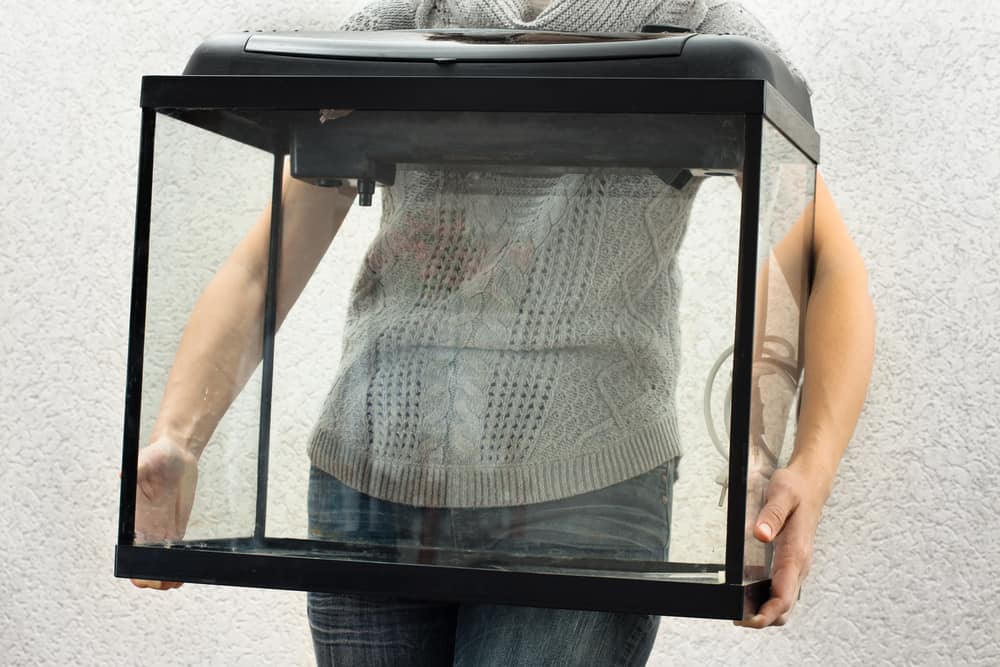

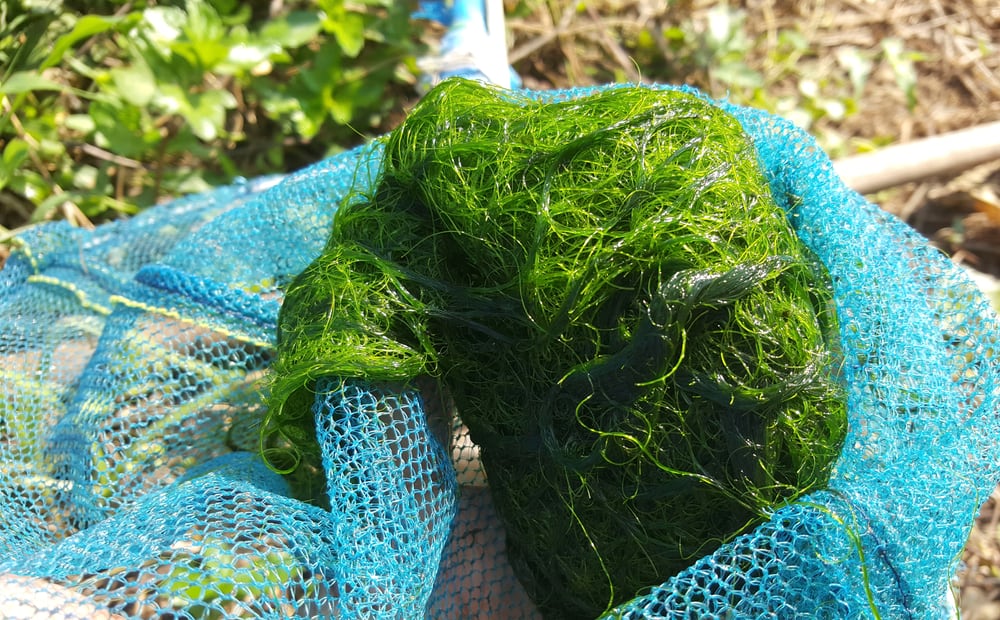
Leave a Reply
You must be logged in to post a comment.